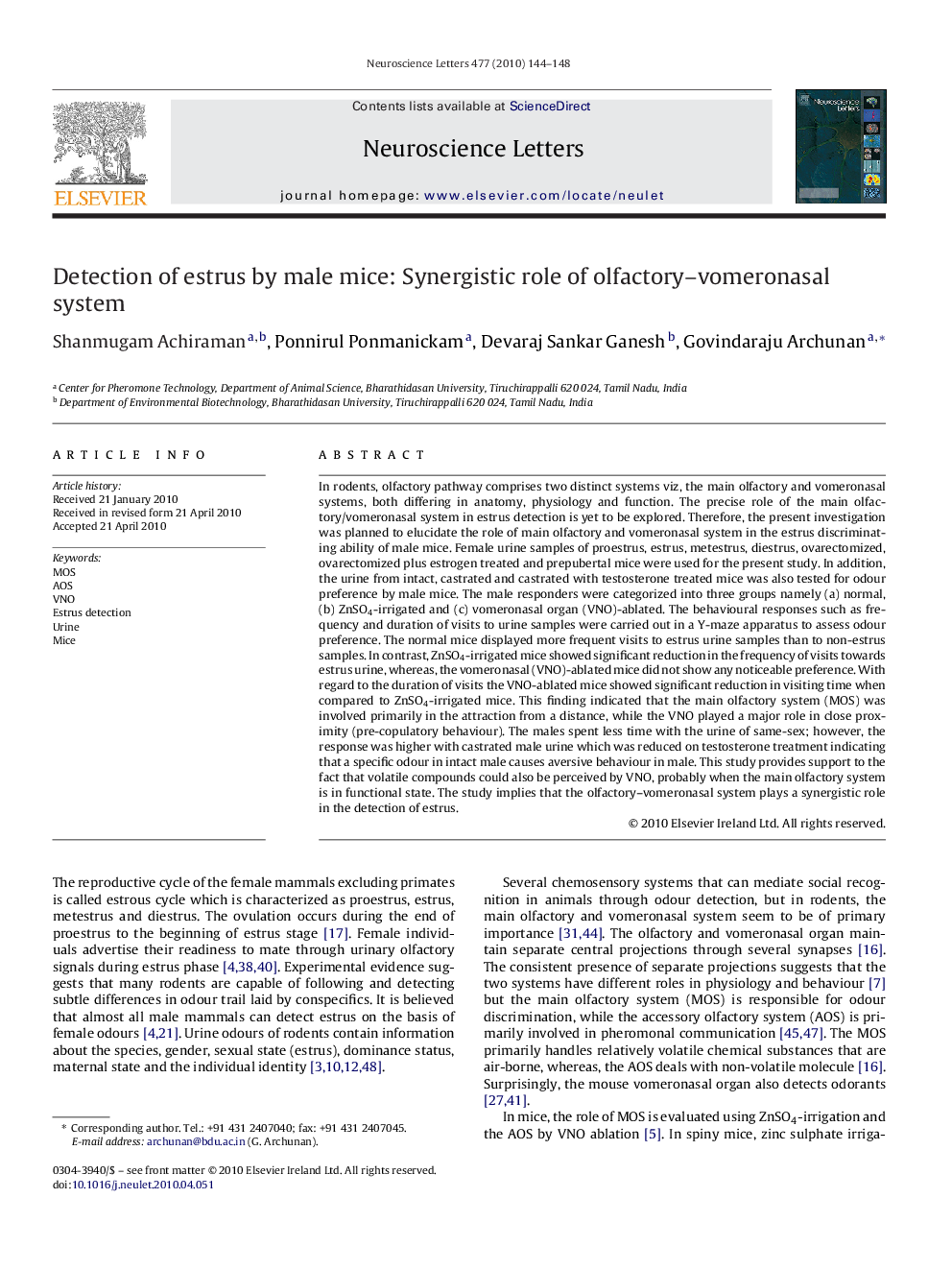| کد مقاله | کد نشریه | سال انتشار | مقاله انگلیسی | نسخه تمام متن |
|---|---|---|---|---|
| 4345871 | 1296759 | 2010 | 5 صفحه PDF | دانلود رایگان |

In rodents, olfactory pathway comprises two distinct systems viz, the main olfactory and vomeronasal systems, both differing in anatomy, physiology and function. The precise role of the main olfactory/vomeronasal system in estrus detection is yet to be explored. Therefore, the present investigation was planned to elucidate the role of main olfactory and vomeronasal system in the estrus discriminating ability of male mice. Female urine samples of proestrus, estrus, metestrus, diestrus, ovarectomized, ovarectomized plus estrogen treated and prepubertal mice were used for the present study. In addition, the urine from intact, castrated and castrated with testosterone treated mice was also tested for odour preference by male mice. The male responders were categorized into three groups namely (a) normal, (b) ZnSO4-irrigated and (c) vomeronasal organ (VNO)-ablated. The behavioural responses such as frequency and duration of visits to urine samples were carried out in a Y-maze apparatus to assess odour preference. The normal mice displayed more frequent visits to estrus urine samples than to non-estrus samples. In contrast, ZnSO4-irrigated mice showed significant reduction in the frequency of visits towards estrus urine, whereas, the vomeronasal (VNO)-ablated mice did not show any noticeable preference. With regard to the duration of visits the VNO-ablated mice showed significant reduction in visiting time when compared to ZnSO4-irrigated mice. This finding indicated that the main olfactory system (MOS) was involved primarily in the attraction from a distance, while the VNO played a major role in close proximity (pre-copulatory behaviour). The males spent less time with the urine of same-sex; however, the response was higher with castrated male urine which was reduced on testosterone treatment indicating that a specific odour in intact male causes aversive behaviour in male. This study provides support to the fact that volatile compounds could also be perceived by VNO, probably when the main olfactory system is in functional state. The study implies that the olfactory–vomeronasal system plays a synergistic role in the detection of estrus.
Journal: Neuroscience Letters - Volume 477, Issue 3, 25 June 2010, Pages 144–148